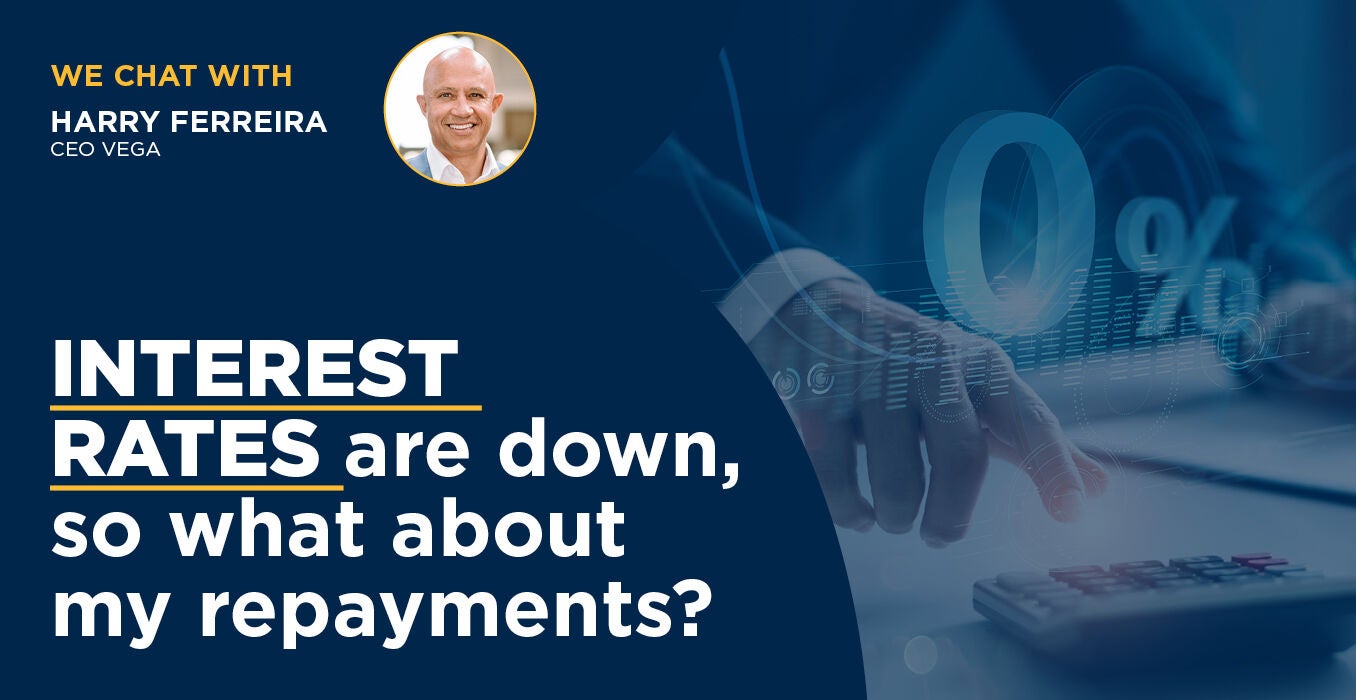
Residential -
Interest rates are coming down, so what should I do with my repayments?
It’s the reprieve we’ve all been waiting for. A 25-basis point cut to the OCR in August followed by another whopping 50 basis point cut this month, bringing down the all important interest rate to 4.75%, with banks quick to slash retail rates in response. Many Kiwis have seen it as an opportunity to keep more money in their back pocket. But for others, it’s the chance to slash years off your mortgage - if you can afford it.
Vega CEO Harry Ferreira has crunched the numbers and says maintaining higher repayments even after you refix can make a huge difference in the long term because you can pay off a larger portion of your loan principal.
“It absolutely depends on the size of your mortgage, but if you had taken out a $500,000 loan over 30 years and there was an interest rate cut of 50 basis points from 6.5% to 6%, you could shave 3 and a half years off your mortgage, if you kept your repayments the same.”
“If you can afford to maintain your repayments at a higher level, and it's not causing your family any distress, then you should look to keep your payments as high as possible.”
Ferreira says the more you put in, the more you can reduce the principal amount that you borrowed.
“That accelerates the debt reduction, because it means you then save interest on the term of your loan.”
“It also gives you flexibility in the short to medium term, because as you pay down more of the principal, you're creating more equity in your home.”
More equity strengthens your financial position, while also providing a safety blanket during tough economic times.
“For every economic dip, there’s also a bounce. When we’re in the bounce, that's a great time to build financial resilience. Keeping your payments high means you’re able to build yourself a strong buffer.”
Ferreira says if things are going well then that increased equity can also allow you the flexibility to upsize your home, buy an investment property or even a bach.
“You can give yourself so much more wriggle room even by paying an extra $50 a week or fortnight.”
WHAT IF I CAN’T AFFORD IT?
For many Kiwis grappling with the cost-of-living crisis every dollar counts, but Ferreira says there’s avenues to meet yourself halfway.
“Most people who are refixing from one or two years ago will be moving from a rate of around 7 percent.”
“You might find the new reduced rate will save you $100 - $200 a fortnight, so you could meet halfway and decide to put half of that back into the mortgage.”
Every dollar makes a difference, and those homeowners about to refix are being encouraged to get the best advice from a broker.
HOW LONG SHOULD I FIX FOR?
With many economists picking the last two OCR cuts to be the first of many, Ferreira says it’s important to think strategically about your mortgage so you get the most bang for your buck.
“Rates will keep coming down over the next 18 to 24 months, so I wouldn't be fixing anything too long term.”
While the interest rate is important, Ferreira says the way you structure your mortgage should also be a priority.
“If you're coming into a lump sum, it may be beneficial to have a portion of your mortgage on a floating rate. This is particularly relevant for people in roles that lean heavily on commission payments.”
That’s because if you decide to pay a lump sum of more than 5% of your total loan balance, you could be charged fixed rate break costs.
“Let's say your loan balance is a million dollars; you can pay $50,000. If it's 500,000, you can pay $25,000, but you can’t pay any more than that without incurring penalty fees.”
Ferreira says while some people may be reluctant to sign up a portion of their loan to a floating rate, it’s not as changeable as some may think.
“I think that people often look at a floating rate, a six-month rate and a one-year rate as one floating and two fixed. But if you think about a six-month and a one-year rate, it's just a slow floating rate.”
“Floating rates don’t change that often either. The banks set them, and they probably only change them every six months. You may only start to see them come down more frequently as interest rates come down too.”
HOW GOOD WILL INTEREST RATES GET?
While many will be hoping for covid-level retail rates to make a return, Ferreira believes 5% will become the new 3.5%.
“I feel if the OCR lands around 2.75% to 3% then you're going to see interest rates at around that 5%. I can't see it going lower.”
“You may have some come up with a 4.99%, as a special, but I can't see most of the main banks having a long term rate of under 5%.”
So when interest rates starting moving into the fives, it might be time to start talking to your broker about a long term strategy.